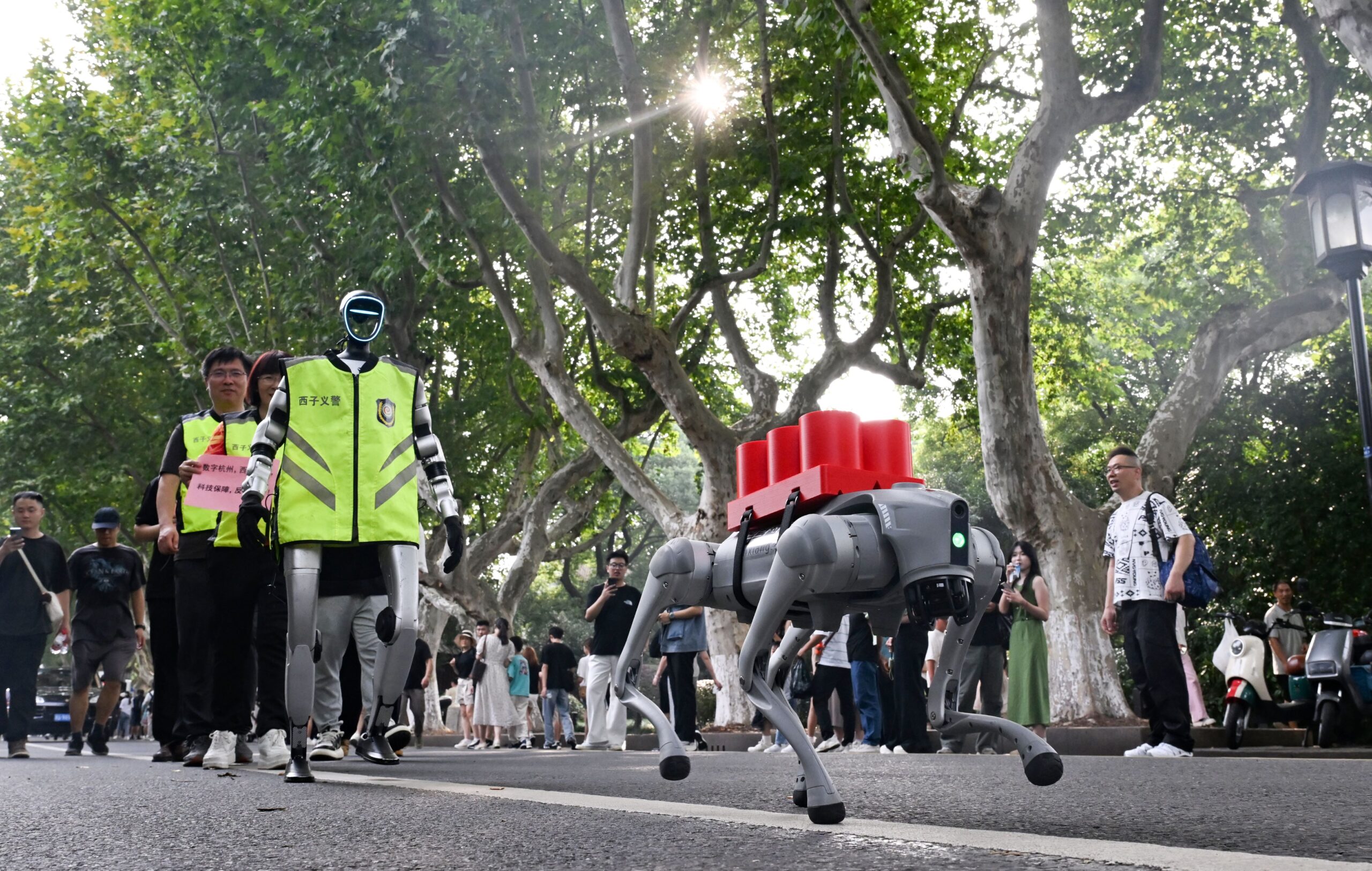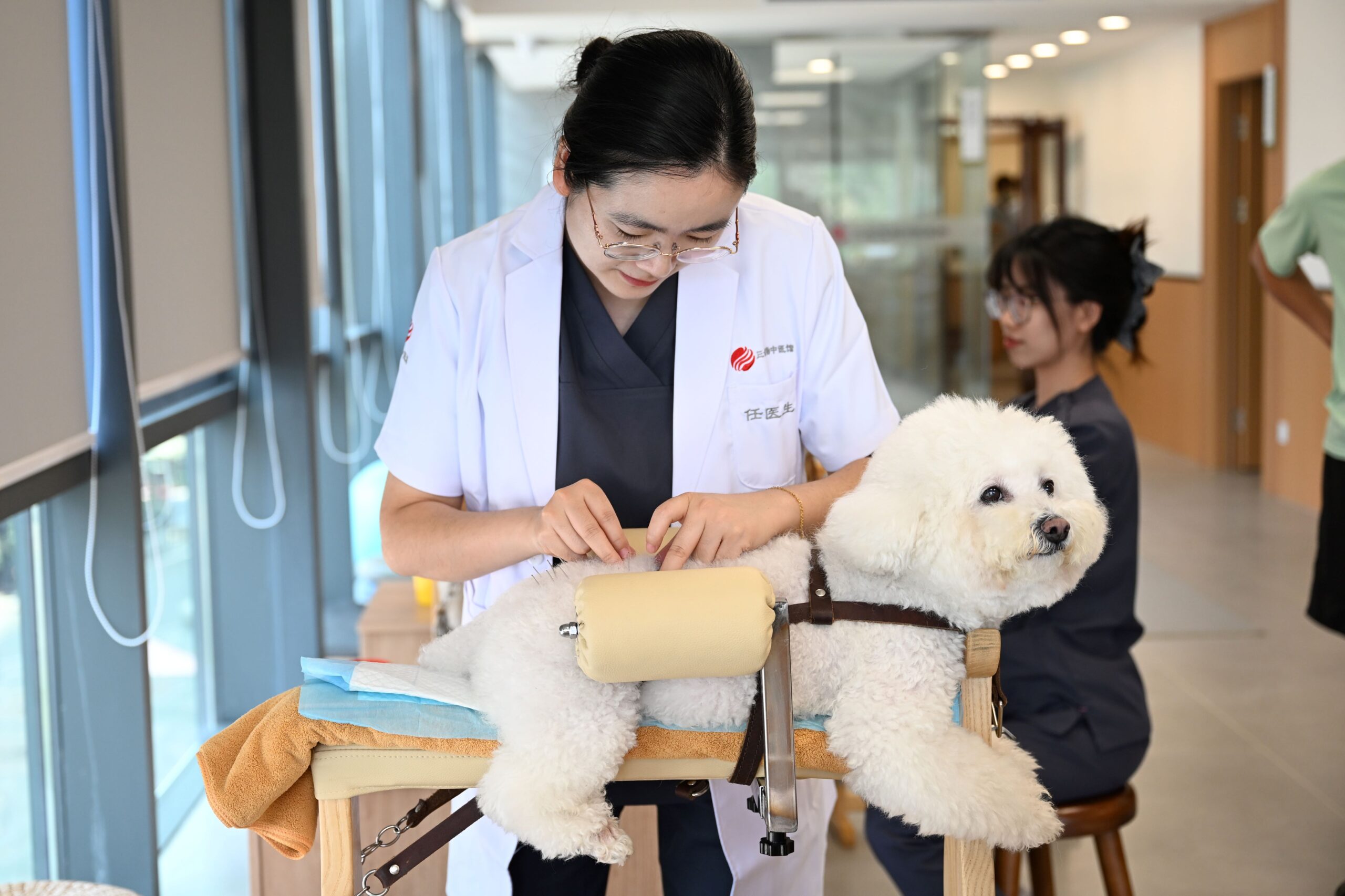The World Artificial Intelligence Conference (WAIC) 2025, held in Shanghai from July 26 to 29, has showcased more than 150 robots with the most advanced lineup to date.
Breakthrough of Embodied Intelligence is Approaching
More than 60 intelligent robot models debuted at the WAIC, with more than 80 enterprises specialising in embodied intelligence taking part. Not only has the number of robots increased, but their functions have also become more diverse.
For example, Chinese robotics firm Dobot Robotics displayed its newest robotic arm, equipped with Tencent Robotics X’s VLA large-language model. The robotic arm demonstrates advanced human-machine interaction capabilities, being able to engage in natural dialogue, interpret users’ intent, perceive environmental conditions and reject unreasonable commands.
Unitree Robotics presented a lineup of embodied AI innovations, including its boxing robot, which showcases the fusion of cognitive and motor intelligence through high-precision movements. The robot is capable of handling intricate tasks such as drumming and calligraphy.
Shanghai-based Keenon Robotics held the global debut of its bipedal humanoid service robot XMAN at the WAIC, highlighting its agile mobility and advanced interactive capabilities. The robot is positioned to support services industries such as hospitality and catering, where both flexibility and intelligent engagement are in high demand.
At this year’s WAIC, industry participants said that the breakthrough of embodied intelligence is approaching. As user demand for robot applications expands, the vast market potential requires smarter, more capable robots and systems.

Create a Training Cooperation Ecosystem
Experts and industry insiders said at the WAIC that substantial development of the embodied intelligence industry depends on the creation of an amiable industrial ecosystem.
Keenon CEO Li Tong pointed out that the market share of the robot industry is still relatively small in China. More companies should be part of the market to improve the industry penetration rate and stimulate demand.

Agreements were signed between companies and the National and Local Co-Built Humanoid Robotics Innovation Centre during the WAIC, aiming to create a training cooperation ecosystem.
According to Jiang Lei, the center’s chief scientist, enabling humanoid robots to work will be the major trend in the next decade, so collecting data from various training grounds is crucial.
Experts from China International Capital Corp said that most humanoid robot orders now come from universities or large manufacturing companies, with the purpose of conducting experiments.
However, they said, industries incurring higher labor costs will be ready to introduce humanoid robots by 2030. Then, the robotics penetration rate will have reached 50 percent among the information technology, equipment production and logistics industries. The penetration rate in residential services, hotels and restaurants is going to rise steadily after 2035.
Joined by seven Chinese universities and two research institutes, the National and Local Co-Built Humanoid Robotics Innovation Center also released an open fund to nurture AI development, although the amount was not disclosed.
Written by Gu Yetao, additional reporting by China Daily and Global Times
If you liked this article why not read: Robots Get Their Own 4S Store—Beijing Leads the Way










